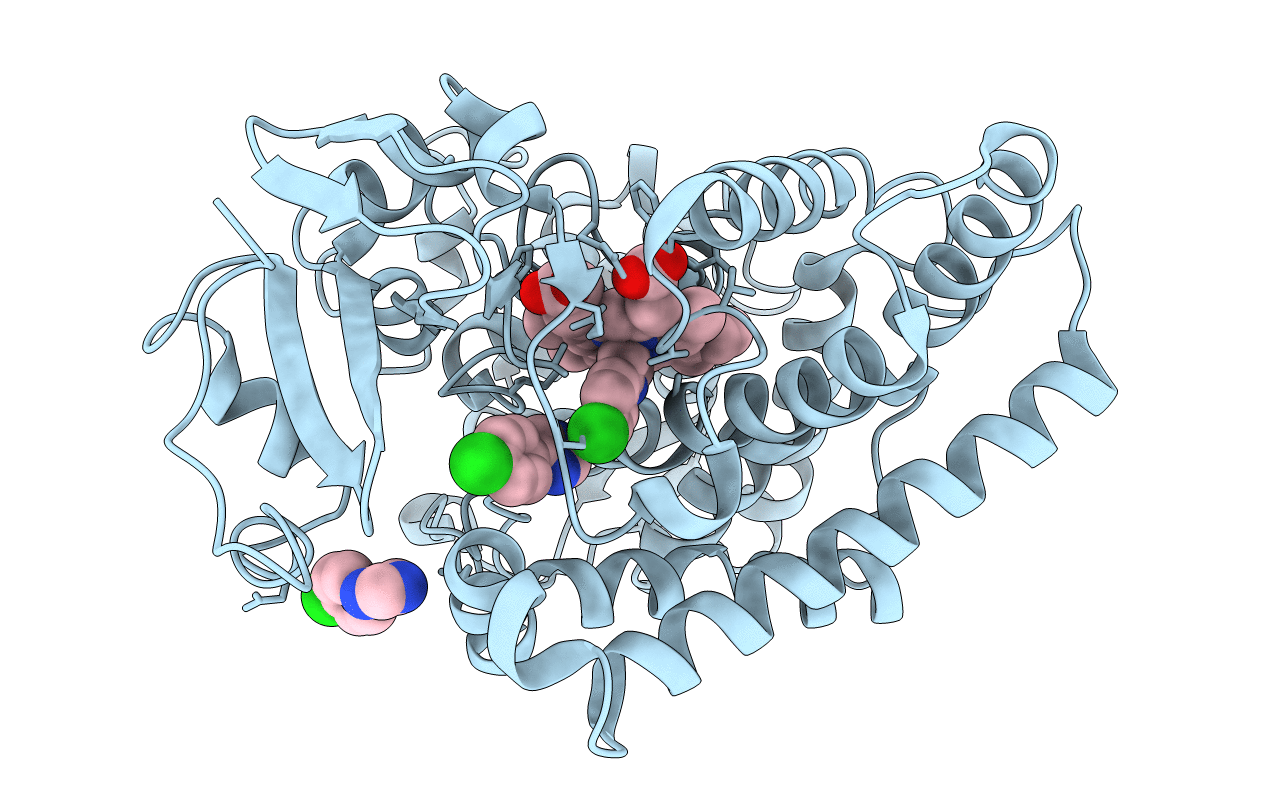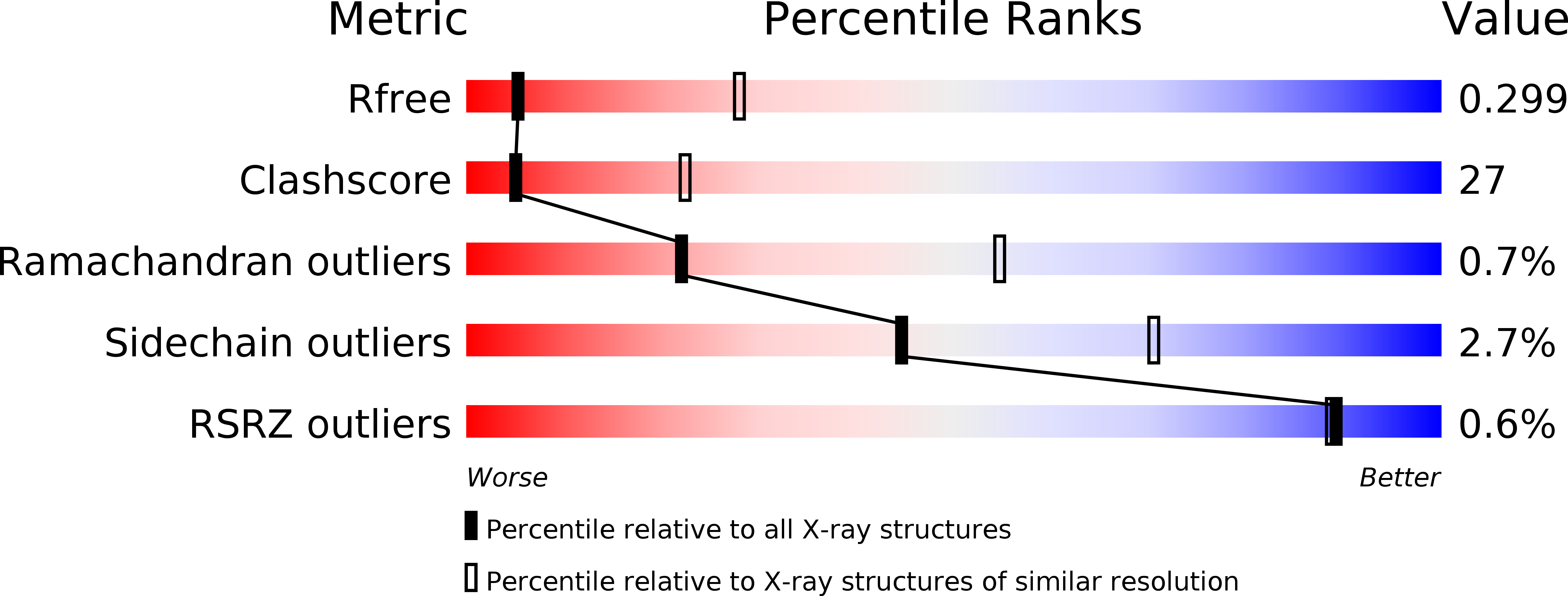
Deposition Date
2015-09-28
Release Date
2016-02-10
Last Version Date
2024-10-23
Entry Detail
PDB ID:
5E0E
Keywords:
Title:
Crystal Structure of Cytochrome P450 2B37 from Desert Woodrat in complex with 4-(4-chlorophenyl)imidazole
Biological Source:
Source Organism:
Neotoma lepida (Taxon ID: 56216)
Host Organism:
Method Details:
Experimental Method:
Resolution:
3.40 Å
R-Value Free:
0.29
R-Value Work:
0.21
R-Value Observed:
0.21
Space Group:
I 41


